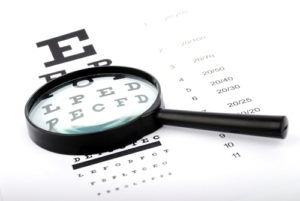Low vision refers to a visual impairment that is not correctable through surgery, prescription drugs, glasses or contacts. It’s often characterized by partial sight, such as blurred vision, blind spots or tunnel vision. Low vision can impact people of any age, but it is primarily associated with adults over the age of 60.

Different cases of low vision require different treatment approaches. Some people develop low vision over time due to aging or a genetic propensity for a certain condition while other people suffer sudden trauma to the eye, which can result in loss of vision or visual impairments. A thorough examination by an eye care professional can help determine the appropriate treatment plan.
Catching symptoms of low vision early may help sight to be preserved and in some cases lessen the advancement of vision loss. Though lost vision cannot be restored, a combination of vision rehabilitation and the use of low vision devices can return something that is almost as important — independence and an increased quality of life. The key is working in tandem with your eye doctor. Some low vision devices that can help individuals see more easily include magnifiers, specialty eyewear, mini-telescopes mounted on eyewear, and closed-circuit TV.
Treatment plans may also include prescription glasses, specialized optical systems, non-optical options, video magnification, and/or medical rehabilitative therapy to maximize the ability to perform daily activities.
To learn more about low vision, schedule an appointment with Washington Eye Physicians & Surgeons.
© 2025 Washington Eye Physicians & Surgeons
The material contained on this site is for informational purposes only and is not intended to be a substitute for professional medical advice, diagnosis, or treatment. Always seek the advice of your physician or other qualified health care provider.